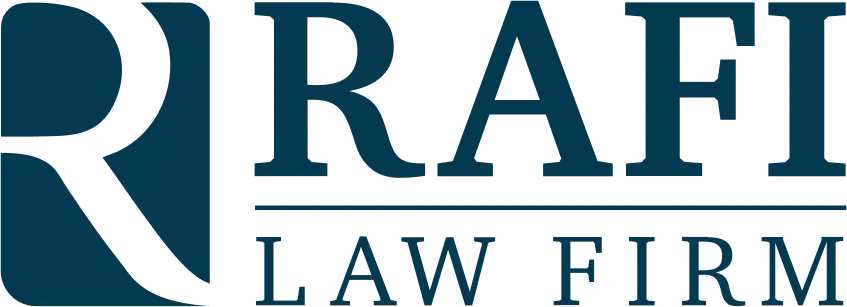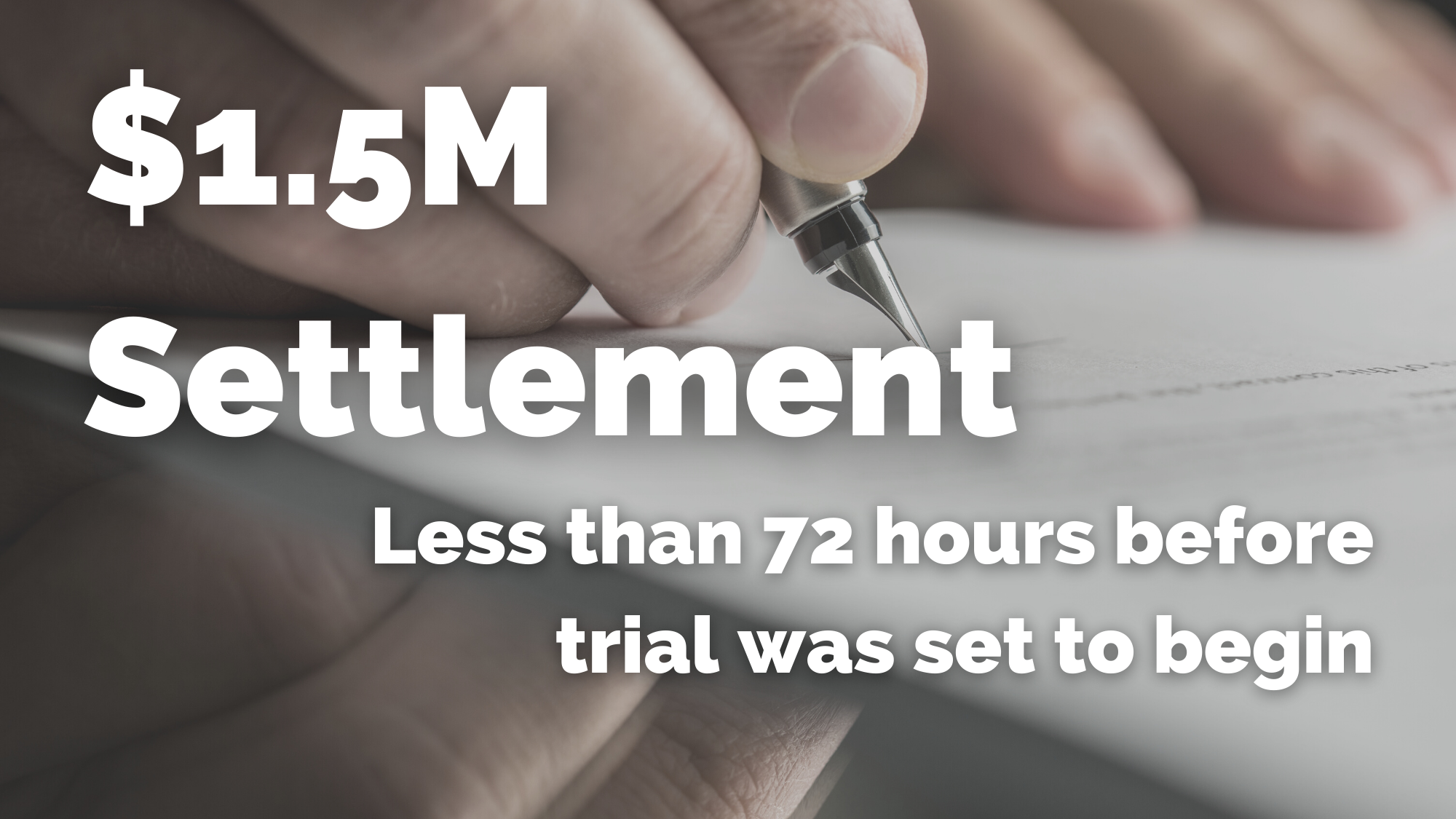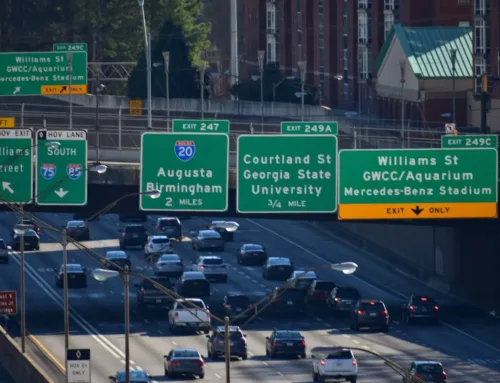We settled our client Natasha’s case 3 days before trial for 1.5 million dollars, which was a quarter-million more than the available insurance coverage. This case perfectly illustrates why it is so important to get your cases to trial, or at least close to trial.
Background
Natasha was rear-ended while leaving a Publix parking lot and had severe neck pain. She went to a handful of doctors, but none of the treatments made her better. She eventually had a two-level cervical disc replacement surgery and continued with injections for pain even after the surgery. By the time trial rolled around, Natasha’s medical bills were approximately $198,000.
The woman (the Defendant) who rear-ended Natasha was insured by State Farm, which offered only $250,000 before the lawsuit. Once we filed a lawsuit, State Farm denied that the Defendant (their insured) was responsible and argued instead that Natasha was responsible because she started to accelerate to merge into traffic and then stopped causing the Defendant to rear-end her.
Armed with some statements made by the Defendant in her deposition, we moved for summary judgment on who caused the crash—meaning we asked the Judge to say as a matter of law that the Defendant was the only one responsible for causing the crash. The Judge agreed and entered partial summary judgment for who caused the crash in Natasha’s favor.
Property Damage Troubles
Nevertheless, the defense would not offer a fair settlement offer. The defense seemed to be hanging their hat on the fact that there was practically no damage to the front of the Defendant’s SUV after the crash. In fact, it did not even need any repairs.
To put the photos of the property damage into the proper context, we took the deposition of the property damage appraiser. The appraiser confirmed that the impact damaged not only Natasha’s vehicle’s bumper cover but also its energy absorber, impact bar, frame rails, and even deformed the unibody of her car. There was a line item on the estimate for putting Natasha’s car on the frame machine to bend the car’s unibody back into place. In short, the pictures of the property damage were misleading because there was hidden damage that went all the way to the core of Natasha’s car. We firmly believed this evidence would sway the jury strongly in our favor.
Trial Issues Early On
We were initially scheduled for trial at the end of 2019. Shortly before trial, the defense disclosed an “expert” named Hanada Cox, who goes around the country claiming that medical bills are too expensive, so defendants should not have to pay those medical bills even though they caused the need for them. In this case, Ms. Cox’s “analysis” was no different—she attacked the reasonableness of Natasha’s medical expenses, hoping the jury would not award Natasha all her medical bills.
After extensively preparing for her deposition, we took a seven-hour deposition of Ms. Cox that included going through all the “sources” for her data. We knew she would refuse to bring the sources to the deposition, so we purchased copies ourselves and brought them. We used those materials to get her to agree that she did not truly know where the data she relied upon came from or whether it was statistically valid.
After the deposition, we filed a Daubert Motion to prevent Ms. Cox from testifying on the grounds that she was not qualified as an expert because Ms. Cox had no idea how her “sources” calculated the values they publish. On the date the defense was to respond to our Daubert Motion, they formally withdrew Ms. Cox—in other words, they knew we would win, so they waived the white flag and gave up.
The Impact of COVID
By this point, it was early 2020, and jury trials were suspended because of COVID. So we waited. As any trial lawyer can tell you, the wait is tough on the lawyers, but more importantly, on the clients who may not have a chance at securing justice without a trial. In the meantime, we sent a policy-limits demand to State Farm for $1,250,000, and in response, they offered $750,000. We ignored the offer and continued to prepare for trial. In January 2022, the Judge told us that March 14, 2022, would be the first day of the trial.
On the Eve of Trial
The week before the trial, Natasha flew in from Texas, where she moved, and together we prepared for the trial. On Friday afternoon—just three days from the start of the trial, the defense called and made a new offer: State Farm’s policy limits of $1,250,000 to settle the case. We recommended Natasha reject that demand for many reasons, and she trusted us enough to do so. About an hour later, State Farm called back and this time offered $1,500,000, which was $250,000 more than the policy limits. It took being less than 72 hours away from the start of the trial, but State Farm finally made an offer to settle the case that Natasha thought was fair, and she accepted.
Key Takeaways
Settling a personal injury case like this results in competing emotions. On the one hand, we were very proud of our work and the outcome. On the other hand, money would not actually make Natasha better or “whole,” as the law says. So, contrary to what many think, there is no joyful party after a fair settlement in cases involving serious injuries.
Insurance companies saved a lot of money and made a lot of money during the delays caused by COVID. We all have stories about clients who couldn’t get fair offers or who had to wait too long for their day in court. This case is proof that patience and persistence pay off when dealing with insurance companies, but the truth is that trials matter. Too often, personal injury clients will not get the best offers until right before or during trials. Preparing every case like it will be tried helps ensure that you and your client will be ready.



